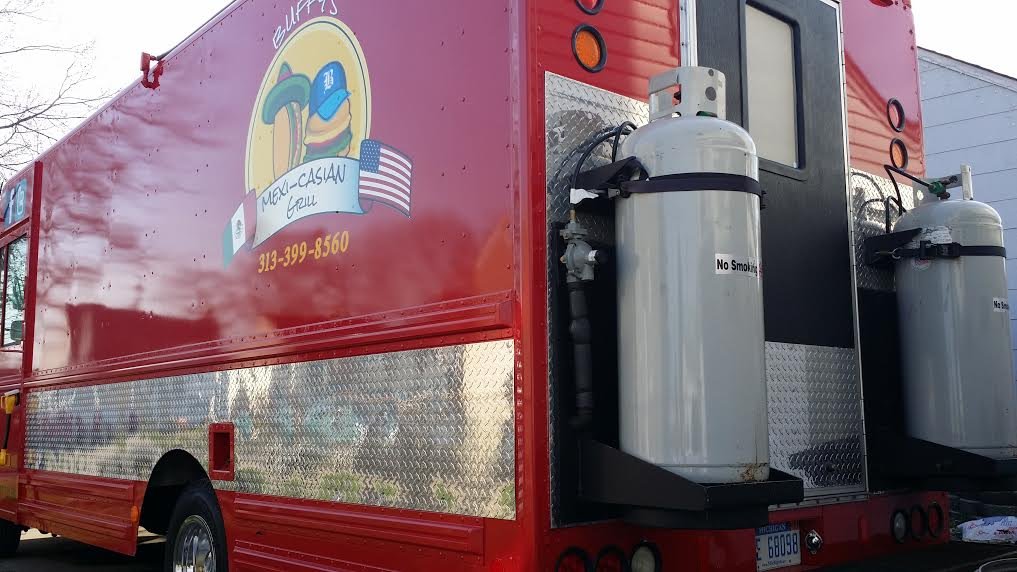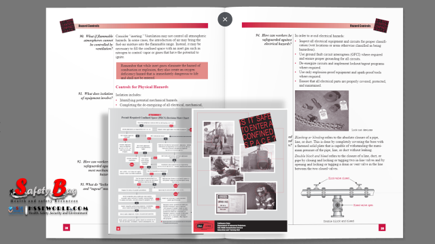When selecting a safety glove, the fit, function, and required level of protection all have to be taken into consideration. Making the right choice is critical. Even an injury as simple as a scrape or a cut can mean the difference between finishing the work day with ten fingers or only nine.
But where do you start, and how do you know you’ve got the right glove for the job? This article will go over the major hand protection options and give you some advice for choosing the glove that will best keep your workers safe.

Fabric or Cotton Gloves
This type of glove (sometimes referred to as “liners”) provides a thin, breathable layer between the worker’s skin and the tools and materials they’re using.
These gloves provide minimal protection against puncture hazards, jagged materials, open flames, or hot surfaces. However, they may provide enough of a barrier to prevent scrapes or abrasions, and they also help keep the worker’s hands clean.
These types of gloves are sometimes used as a base layer beneath a larger glove when working in colder climates (hence, the liners nickname). Some manufacturers add a coating to the glove’s fabric in order to improve grip, increase protection, or add strength to the glove.
Coated Fabric Gloves
These are a general purpose gloves. They offer a higher level of puncture and cut resistance, increased protection from the alkalinity of concrete items such as bricks, and improved chemical resistance when compared to a standard fabric glove.
There are many different coatings available, including:
- Latex
- Nitrile
- Polyurethane
- PVC
Which coating is right for your task should be determined by a risk assessment for the desired application.
Although this style of glove is widely used, some coatings are known to become less flexible in colder work temperatures and they have less insulating properties, allowing heat to escape from the hands.
It’s important to note that while this style of glove does offer some chemical resistance, it is not in a substitute for a dedicated chemical glove when one is needed.
Rubber, Plastic, or Synthetic Gloves
These gloves are widely used in laboratories and healthcare settings. They provide protection against:
- Bio-hazards
- Oils
- Solvents
- Grease
- Chemicals
They are typically form-fitting, which gives the user more dexterity to manipulate small items and perform fine work. This type of glove, however, will not provide adequate protection against punctures or sharp and abrasive surfaces.
Leather Gloves
Leather gloves have a wide range of uses and many useful qualities.
Leather is a material that offers a good grip, resists sparks, and protects against sharp or abrasive surfaces. This protection even continues when the glove is exposed to moderate levels of heat, such as the heat from welding or the friction from a rope passing through the palms of the gloves while lowering loads.
Leather gloves offer high durability, function, and a great fit, but they are known to harden or shrivel if exposed to too much heat. They can also dry out hands when they’re not paired with a liner that serves as a barrier between the skin and the raw leather.
This style of glove is largely used while welding. And it is available with a variety of built-in liners, such as Kevlar or winter lining, which makes it a very well-rounded choice for industrial hand protection.
Aluminized Gloves
These are a high-heat-resistant glove, suitable for welding operations and also used in furnace and foundry work or in laboratories with high-heat ovens.
They are manufactured with insulating and reflective properties, thanks to which they can provide heat protection in applications up to 2,000 degrees Fahrenheit.
Kevlar Gloves
Kevlar gloves have had a considerable impact on industrial hand protection. The material allows for a lightweight and durable glove with remarkable resistance to cuts and abrasions.
Gloves manufactured with Kevlar have a wide variety of industrial applications, and Kevlar is also used as a lining to support a variety of other glove styles (learn about Trends and Technologies in Making Cut Protective Gloves Truly Comfortable).
Puncture Resistant Gloves
These gloves are dedicated specifically to preventing a puncture to the hands. They can be woven Kevlar gloves or gloves which have been manufactured to emulate the skin of a fish. These latter use a scale- or flake-like structure to deflect penetration from needles, shards, and other significant puncture risk exposures.
Impact-Resistant and Vibration-Resistant Gloves
Many people have been adversely affected by vibration or impact to the hand. In fact, hand-arm vibration syndrome (HAVS) is quickly becoming a topic of great interest to safety professionals.
Thankfully, there are gloves specifically designed to mitigate this risk on the market. They work absorbing the energy from an impact and reducing vibration to the hands.
Impact resistant or vibration resistant gloves may be the hand protection you need if you are engaged in a task where energy may be transferred to your hands, or you will be receiving repeated impact or vibration for an extended period of time.
Vibration-resistant gloves are highly valued in fabrication work, where workers might use a grinder for an entire shift, or in the construction and automotive industries, where jackhammers and other pneumatic tools might be used for extended periods of time.
Chemical- and Liquid-Resistant Gloves
Deciding which chemical- or liquid-resistant glove to employ is no small undertaking. The importance of industrial hygiene is often underestimated and absorption of chemicals through the skin can lead to serious long-term or immediate health effects.
Referring to a product’s MSDS will help you identify the proper level of protection required to keep you safe while handling that chemical material (find out What You Need to Know to Keep Your Hands Safe from Chemical Exposure).
Here are some examples of chemical-resistant gloves and their applications.
Butyl Rubber Gloves
These are typically used when workers will be in extended contact with a substance. They also offer resistance to water and steam permeation.
Butyl rubber is also used for protection against materials such as:
- Ketones, esters, alcohols
- Alkali
- Nitric acid
- Sulfuric acid
- Hydrochloric acid
- Peroxides
Natural Latex / Rubber Gloves
Intended for incidental contact situations. Suitable for biological hazards and water-based liquids.
Neoprene Gloves
Typically used in extended contact situations with materials such as:
- Acids
- Bases
- Alcohols
- Fuels
- Peroxides
- Hydrocarbons
- Hydraulic fluids
- Gasoline
- Alcohols
- Organic acids
Nitrile Rubber Gloves
Nitrile gloves are good versatile, general-use gloves. They can be intended for incidental contact (such as disposable exam gloves) or supplied in a thicker format for situations where extended contact is intended.
Nitrile gloves are used for protection for materials such as:
- Solvents
- Petroleum oils
- Gasoline
- Greases
- Some acids and bases
First, Identify the Hazards
So, as you can see from this compilation of hand protection, we have many options to neutralize ergonomic, industrial hygiene, or immediate safety hazards.
The first step in determining which type of hand protection is right for you is to identify the hazards and the corresponding hand protection measures. Full hand protection may even require using more than one type of glove throughout the day.
Conclusion
The wide array of options can make selecting safety gloves intimidating. But with this list, you will be well equipped to make the right choice.
Use the right kind of glove for the job. Your hands depend on it.
Protect your employees and protect your company. Provide the right workplace safety gloves and PPE, make sure it’s used, and make sure it’s used properly! you can select your proper gloves from HERE



